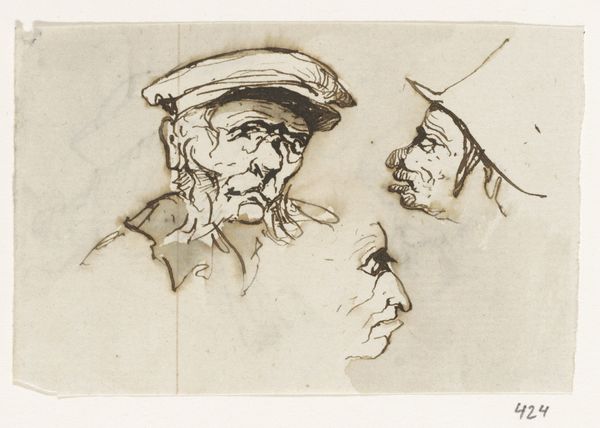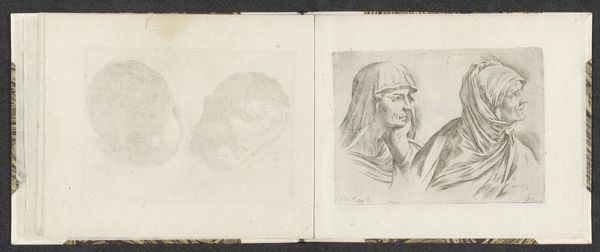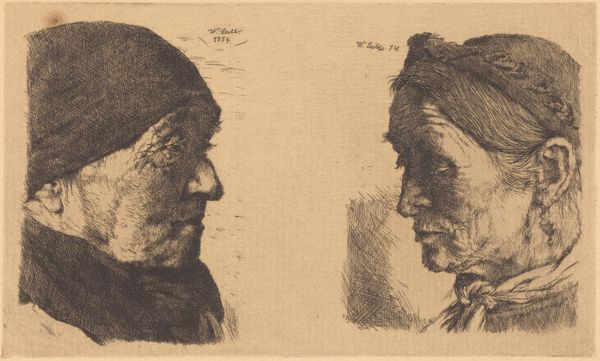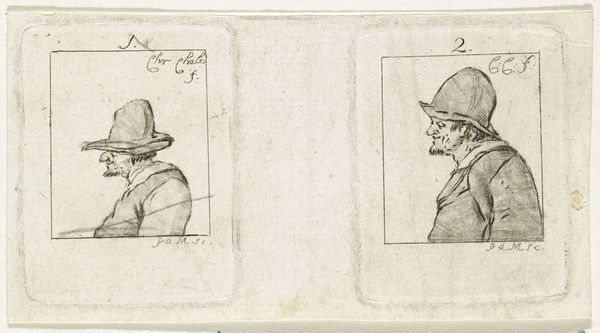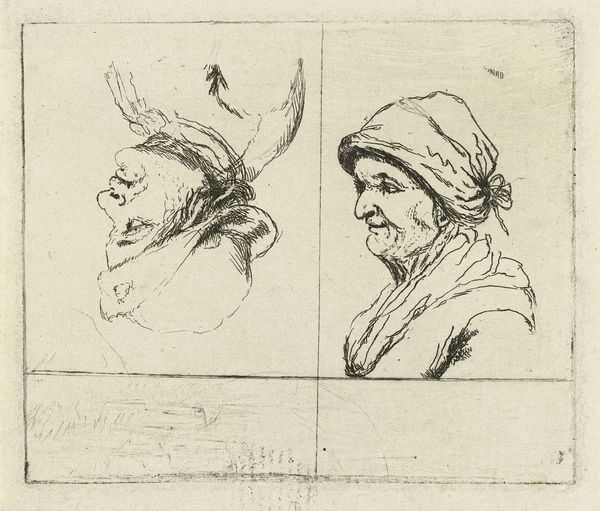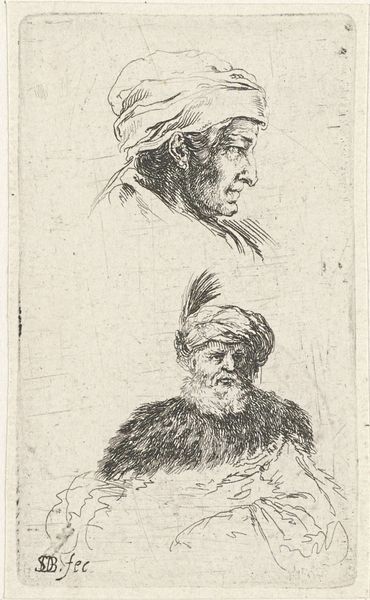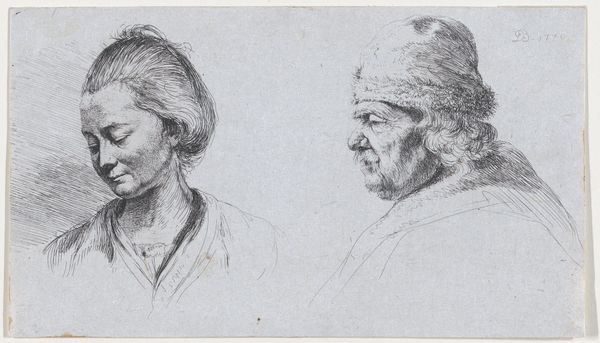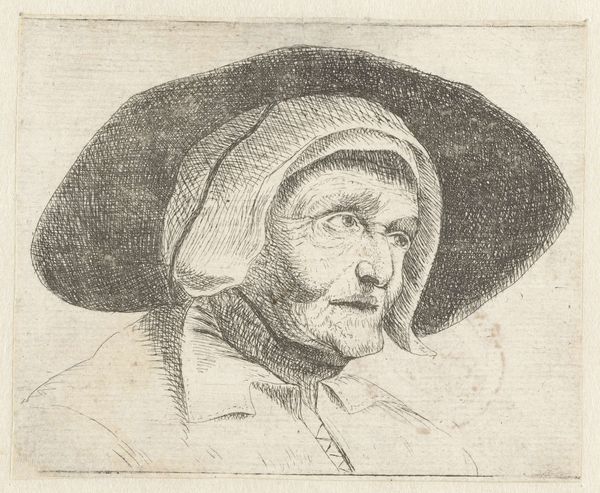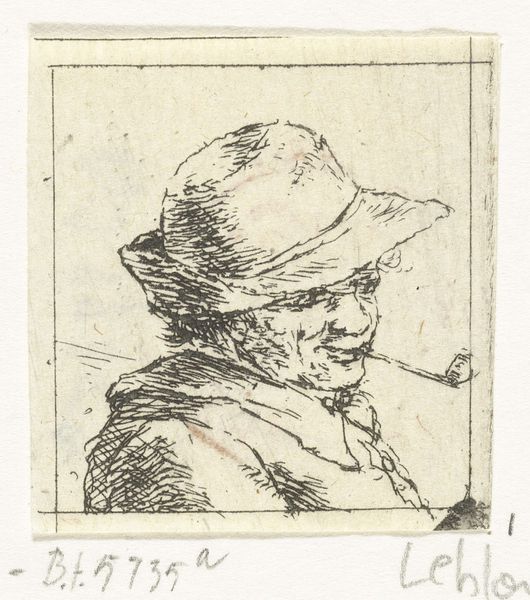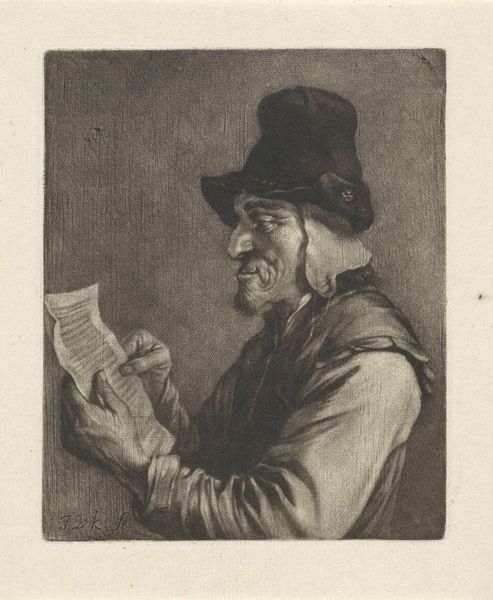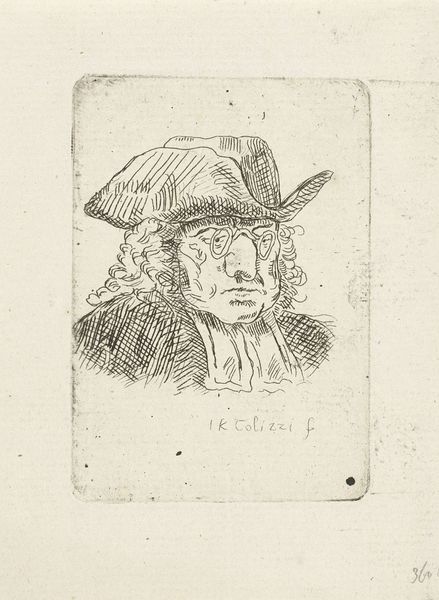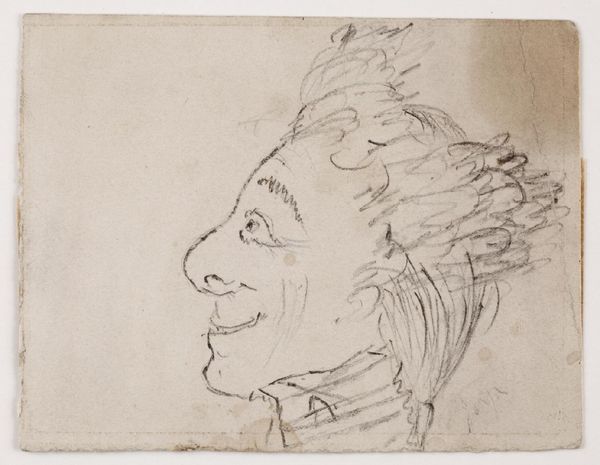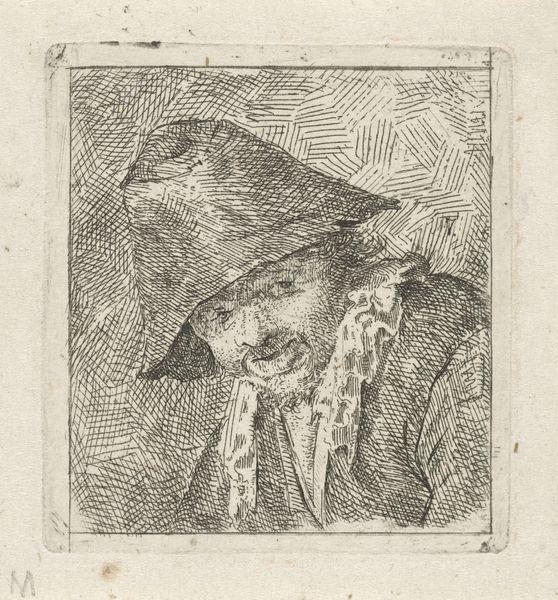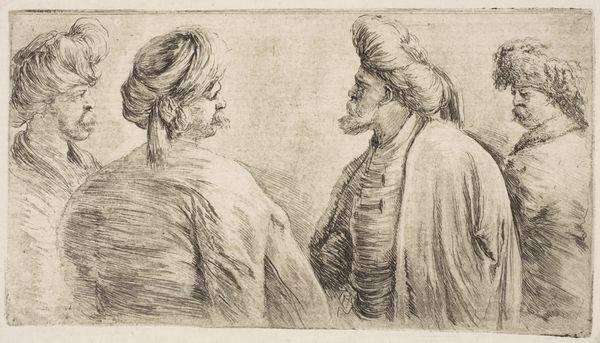
print, engraving
#
portrait
#
pencil drawn
# print
#
figuration
#
line
#
genre-painting
#
engraving
#
realism
Dimensions: height 160 mm, width 282 mm
Copyright: Rijks Museum: Open Domain
Editor: Here we have "Two Peasants' Heads", a print made with engraving sometime between 1768 and 1796, currently residing in the Rijksmuseum. The expressions are just amazing; you can almost see their personalities etched onto their faces, the hats giving them character! What do you see in this piece that stands out? Curator: What strikes me immediately is the potential reading of these 'peasant heads' as social commentary. Prints like this circulated widely. It raises questions about how artists, and indeed the upper classes, perceived and represented rural populations. Think about who would buy these? And why? Editor: So, it’s not just about depicting people, but about a power dynamic between the artist and subject, and then the buyer and the subject? Curator: Precisely. Consider the period—late 18th century, pre-revolution simmering tensions. Were these images meant to romanticize rural life, to satirize it, or perhaps even to dehumanize it? The artist Pieter de Mare likely worked within a network of printmakers serving a specific market. We must think about his patrons, their biases. Does the precision of the engraving add a layer of intended 'truthfulness'? Editor: That’s a perspective I hadn't fully considered. So it's not just "realism", but potentially loaded realism. The market really shaped the artist’s intention and perhaps even execution of it, beyond just aesthetic value? Curator: Exactly. The beauty of art history lies in unraveling these complexities – understanding art not in isolation, but as a product of specific historical, social, and economic forces. Hopefully you have food for thought? Editor: Definitely, I’ll look at art differently now – questioning the "why" behind even seemingly simple portraits. Thanks for shedding light on it.
Comments
No comments
Be the first to comment and join the conversation on the ultimate creative platform.
